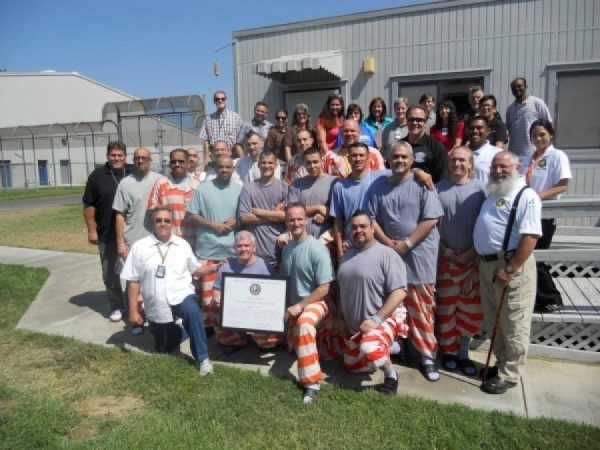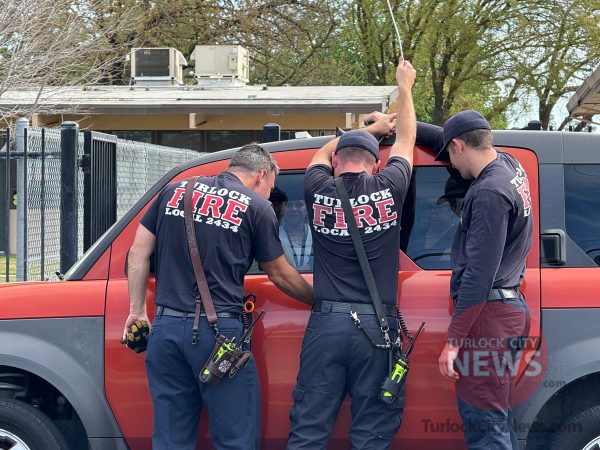The Stanislaus County Sheriff’s Department is working hard to ensure that when inmates leave the county jail they don’t come back.
A recently launched program, the Sheriff’s Custody & Community Institute of Life Skills, founded by Sheriff Adam Christianson and Chaplain Michael Atinsky, prepares inmates for release and their subsequent transition back to freedom – and all the temptations that come with it.
Albert Einstein’s famous quote, “insanity: doing the same thing over and over again and expecting different results,” can be applied to the state of our nation’s correctional systems, including local county jails. With recidivism rates ranging on average from 75 to 90 percent within one to three years, experts almost universally agree that something has to change when it comes to the seemingly endless loop of criminal behavior which plagues certain individuals to a life in-and-out of jail or prison.
The SCCILS (pronounced “skills”) concept was the brainchild of Atinsky and Christianson, when they concocted a special blend of ingredients they believe will help stem the flow of recidivism in the county.
“That’s our goal, reduce recidivism through educational and vocational opportunities,” said Christianson.
Atinsky says the goal is simple, yet very complex.
“Our goal is not to help inmates get out of jail earlier, but to stay out of jail and that is far easier said than done,” he said.
SCCILS combines and incorporates educational, vocational and rehabilitative opportunities under one roof – the county jail. The premise is that a 24/7 environment which emphasizes a positive culture will encourage an inmate’s change in mind, emotions and spirit.
When asked how much SCCILS cost taxpayers, Atinsky said, “almost zero.” He explained it is collaboration more-so than a new financial endeavor.
This program doesn’t just occur inside the walls of the jail, it follows released inmates into the world that likely led them to jail in the first place. SCCILS aims to provide classes, therapy, support groups, faith, housing and employment to select inmates from the Jail Alternatives Unit.
Inmates selected for SCCILS go through an interview and are selected for the program based on their past crimes, behavior in jail, proven desire to change their lives and, perhaps most importantly, if they can be placed into an environment with fewer restrictions than jail and not revert to their criminal activities.
Like with many problems, there is no single answer or solution to the complexities of a human being.
“We are trying to build a new culture within these men, a culture of integrity, honesty, hard work and working within a family structure,” Atinsky said.
The Sheriff’s Department reports that the process of selecting these inmates began in April of this year. Of the first 20 men who began the program, 18 finished the first 60 days “satisfactorily.” Atinsky explained that a “satisfactory” completion includes registering and attending classes and support programs with affiliated agencies, obtaining transitional housing, volunteering in the community, completing probation or parole, and obtaining employment.
The may or may not mean the inmates are necessarily out of jail. A satisfactory outcome in jail includes a change in interaction with other inmates and authority, as well as attending scheduled classes.
Support programs in and out of the jail involved with SCCILS currently include Alliance Worknet, Behavioral Health Recovery Services, Chaplain Pass Holders, Celebrate Recovery, Friends Outside, Gospel Mission (Modesto and Turlock), Reading Works, Sierra Learning and Sierra Vista.
When an SCCLIS inmate is released into the general public they are given a SCCLIS membership card with support numbers on it. When the former inmate attends a class or volunteer opportunity the personnel at the agency call into SCCILS and provide updates on the inmate's attendance and progress. Also the former inmate can call just to have supportive conversations with Atinsky or other jail support personnel.
For inmates graduation from SCCILS occurs on the day they come back to the Detention Center on a visitor’s pass to tell their story of how they made changes to their lives and are living a law-abiding life.
“Its about creating mentors for other inmates to model. A lot of the inmates have led tragic, tragic lives and they never really had a positive model to follow,” said Atinsky.
Both Christianson and Atinsky acknowledge this program is in its infancy, however the early results are encouraging. There are similar programs in the California Department of Corrections and in county jails, however Christianson says SCCLIS is unique from state programs because of the strong relationships at the local level between the jail and support agencies and programs.
Future plans for SCCILS are likely to include expansion to female inmates and a dorm-like experience for inmates in the jail. Also, SCCILS hopes to keep growing a diverse partnership of community support organizations, as well as increasing the number of inmates involved in SCCILS.
Earlier this month, a new cohort of 13 inmates began the SCCILS process. The continuing students will be right there, encouraging and tutoring them.








